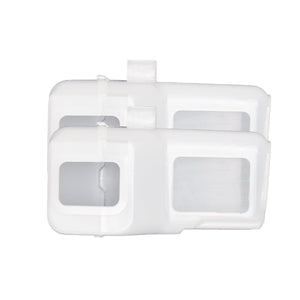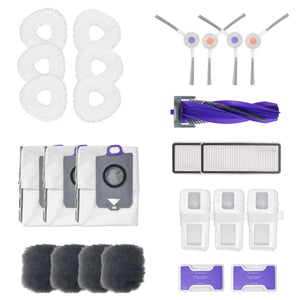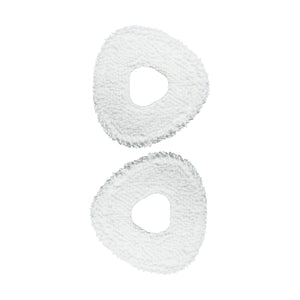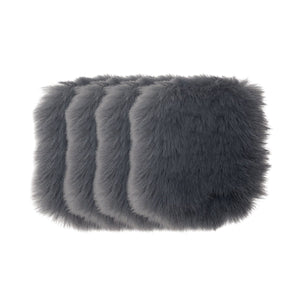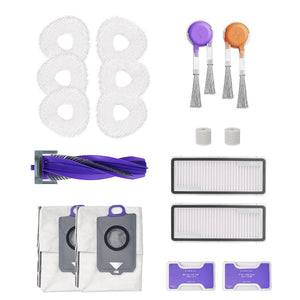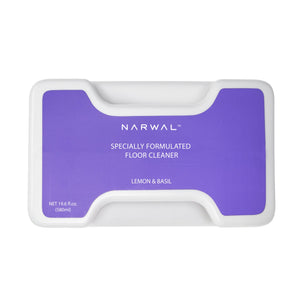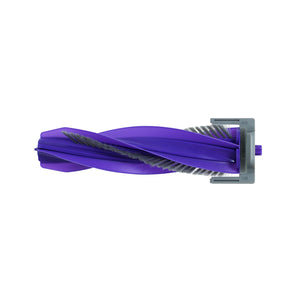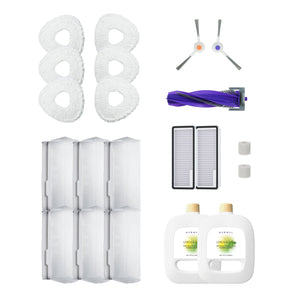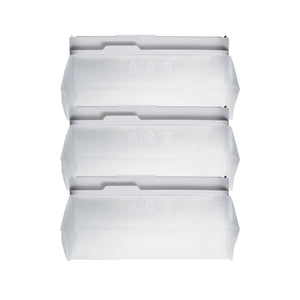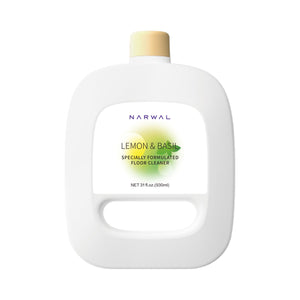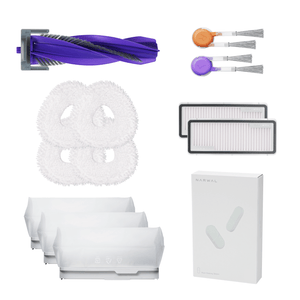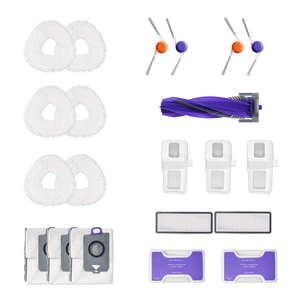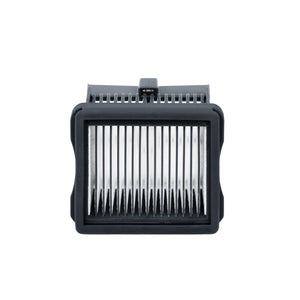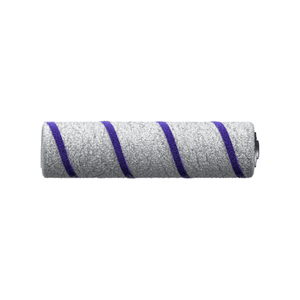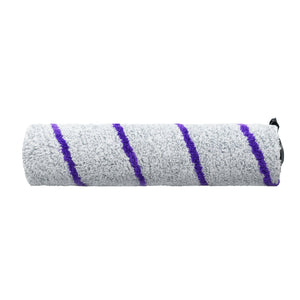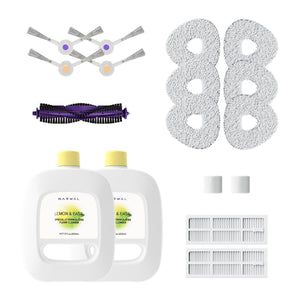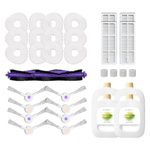Seeing smoke coming from your vacuum can be alarming — it’s usually a sign that the machine is overheating or under mechanical stress.
In most cases, visible smoke points to issues such as blocked airflow, worn belts, or electrical faults that require immediate attention.
This guide explains what vacuum smoking means, how to handle it safely, and the steps you can take to prevent it in the future.
For those seeking long-term reliability, modern models like the Narwal Freo and Narwal Flow integrate automated cooling and self-cleaning systems that minimize the risk of smoke or overheating.
Common Reasons for Vacuum Smoking
Most vacuums emit visible smoke due to overheating, restricted airflow, worn belts, or electrical faults. Each issue indicates a different kind of strain inside the vacuum, and identifying the cause early can prevent long-term damage.
Overheating Motor
An overheating motor is the most common cause of vacuum smoking. When airflow is blocked or the vacuum is used for an extended period, the motor has to work harder, which increases heat. As internal temperatures rise, visible smoke may appear near the motor or exhaust area, signaling heat stress and potential failure.
Narwal’s vacuums, such as the Freo Z Ultra, feature an advanced motor cooling system that maintains a safe temperature during prolonged cleaning. This design prevents overheating and visible smoke, ensuring consistent performance and safety.
[cta:narwal-freo-z-ultra-robot-vacuum-mop]
Clogged Airflow
A blocked airflow can also cause your vacuum to smoke. When dust, debris, or pet hair accumulates in the hose, filter, or air passage, airflow becomes restricted. This trapped heat builds pressure in the motor chamber, which can result in visible smoke or temporary power loss if left unchecked.
Narwal vacuums use high-efficiency filters that trap fine particles while keeping airflow clear. This helps prevent excessive heat buildup and ensures stable, smoke-free operation.
Worn-Out Belts
Over time, vacuum belts can become worn, frayed, or stretched. When a belt slips or rubs against the roller, friction increases, generating heat that can produce visible smoke. A damaged belt also reduces suction efficiency and may stress the motor.
Narwal’s brush system is engineered to reduce strain on the belt and minimize friction. This extends belt life and prevents smoke caused by mechanical wear.
Debris in the Brush Roll
Hair, string, or carpet fibers can accumulate around the brush roll, preventing it from rotating freely. When this happens, the motor works harder to turn the brush, which can lead to overheating and visible smoke.
Narwal vacuums feature Zero-Tangle Brush Technology, which captures hair and debris without wrapping around the roller. This reduces strain on the motor and helps maintain smooth, smoke-free operation.
Electrical Faults
Electrical faults are less common but can still lead to vacuum smoking. Damaged wires, loose connections, or short circuits inside the housing may cause sparks or visible smoke near the power cord or motor. If you notice this, unplug the vacuum immediately and avoid using it until it has been inspected by a professional technician.
Narwal vacuums are built with intelligent fault detection systems that automatically shut down when electrical irregularities are detected, preventing overheating and ensuring safe operation.
Understanding what causes your vacuum to smoke is the first step. Next, we’ll look at how to diagnose and fix the problem safely.

How to Diagnose a Smoking Vacuum (Step-by-Step)
If your vacuum starts to smoke, it’s important to diagnose the problem quickly. These steps will guide you in finding the source of the smoke.
Step 1: Unplug Immediately
Always disconnect power first to avoid further electrical damage. When your vacuum starts smoking, immediately turn it off and unplug it. Begin by checking for any visible issues. Look at the brush roll to see if there’s anything obstructing its movement. Narwal vacuums, with their anti-tangle technology, reduce the need for this type of manual inspection, but it’s still good practice to check occasionally.

Step 2 — Check Airflow & Filters
Blocked filters restrict air and can cause the motor to emit smoke. Check the hose and filters to ensure nothing is blocking them. Blockages can restrict airflow, causing the motor to overheat. If there’s a blockage, clear it gently to get the airflow back to normal. Narwal vacuums’ high-efficiency filters and self-cleaning features help keep airflow unobstructed, reducing the chance of overheating.
Step 3 — Inspect the Belt and Brush Roll
A stuck brush or worn belt may cause smoke from friction. Look over the belt for any wear or damage. A frayed or loose belt can create friction, leading to heat buildup and smoke. Check the brush roll for any hair or debris that could be causing it to stick. Narwal’s Zero-Tangle brush technology minimizes the risk of hair getting wrapped around the brush, keeping it free to rotate.
Step 4 — Look for Electrical Signs
If smoke comes from the motor housing, the issue is likely electrical. If you notice a burning smell or hear unusual noises, it could be an electrical problem. Inspect the power cord and internal wiring for signs of damage. If you notice electrical issues, consulting a professional is recommended. Narwal vacuums include built-in safety measures to minimize electrical risks.

How to Fix a Smoking Vacuum
After diagnosing the issue, you’ll need to take steps to fix it. Here’s how to tackle the usual reasons for a smoking vacuum.
Clear Blockages
If your vacuum has a blockage, carefully remove it. Check the hose, brush roll, and filter for any debris. Narwal vacuums are equipped with self-cleaning features that clear debris automatically, reducing the need for manual cleaning.
Replace Worn Parts
If the belt or brush roll is damaged, it’s best to replace it. Check the user manual for replacement instructions. Narwal vacuums are designed to reduce wear on these parts, but regular inspection and timely replacements help maintain performance.
Clean the Filters and Vents
A blocked motor or filter may cause it to overheat. Follow the manufacturer’s guidelines to clean your vacuum filter. With Narwal vacuums, the self-cleaning filter system keeps the motor and filter in good condition, reducing the need for manual cleaning.

Seek Professional Help for Electrical Issues
Electrical problems can be complex. If your vacuum is smoking due to an electrical issue, consult a professional repair service. Narwal vacuums have built-in safety features that detect electrical issues, helping you avoid risky repairs.
Understanding how to prevent smoking is just as important as knowing how to fix it. With proper care and smart design, you can keep your vacuum operating safely for years.
How to Prevent Your Vacuum from Smoking
Prevention is the best way to keep your vacuum free from visible smoke and overheating. Regular care, smart operation, and the right equipment design can greatly reduce the risk of smoke or performance loss.
Regular Maintenance
Routine maintenance helps prevent the buildup of dust, debris, and friction that can lead to overheating. Check key parts such as the brush roll, belt, and filter periodically to ensure smooth operation. Narwal vacuums simplify this process through self-cleaning systems and intelligent sensors that automatically monitor and maintain internal components, reducing the need for manual upkeep.
Keep Airflow Clear
Clear airflow is essential for keeping the motor cool. Inspect and clean the hose, filter, and vents regularly to prevent blockages that restrict suction and cause heat buildup. Narwal vacuums use high-efficiency filtration systems that prevent clogging and maintain optimal airflow, reducing the risk of smoke caused by heat pressure inside the motor chamber.
Avoid Continuous Overuse
Running a vacuum for too long without breaks can cause excessive heat buildup in the motor, eventually leading to visible smoke. To prevent this, allow short pauses between extended cleaning sessions. Narwal vacuums are designed for efficient, low-strain operation, allowing them to handle longer use cycles while keeping motor temperature under control.
Follow the Manufacturer’s Guidelines
Always operate your vacuum according to the manufacturer’s instructions. Proper use ensures that parts function within safe temperature limits and prevents electrical or mechanical strain. Narwal provides detailed usage and care guides for every model, helping you maintain safe, smoke-free performance over time.
In summary, keeping your vacuum smoke-free requires consistent maintenance, clear airflow, and responsible use. Narwal’s advanced design—combining automated maintenance, smart sensors, and heat protection—offers an effective long-term solution to prevent visible smoke and ensure reliable performance.

Narwal’s Smart Solution to Smoking Problems
Modern cleaning devices are increasingly designed to reduce the risks that cause vacuums to emit smoke, such as overheating and restricted airflow.
Narwal’s latest models, including the Freo Series and Narwal Flow, apply this principle through systems that automatically regulate temperature, maintain airflow, and minimize friction within the motor and brush assembly.
[cta:flow-robot-vacuum-and-mop]
These features do not just improve performance—they also lower the likelihood of visible smoke caused by strain or blockage. While traditional vacuums may rely on manual maintenance to stay cool, Narwal’s automated designs integrate continuous self-cleaning and heat management, helping the machine operate safely and efficiently over time.
Conclusion
Visible smoke from a vacuum is a sign that the machine is under stress and needs attention.
Simple steps like timely inspection, cleaning, and proper use can often prevent it.
For those who prefer a more hands-free and reliable approach, models such as the Narwal Freo and Narwal Flow incorporate automated cooling and self-maintenance systems that help keep operation safe and consistent.
[cta:narwal-freo-x-ultra-robot-vacuum-mop]
FAQs
1. Is it safe to continue using a vacuum if I notice a burning smell but no smoke?
No, a burning smell is often a warning sign of overheating or potential motor issues. Power it down and check right away to prevent any more harm.
2. How can I tell if my vacuum’s motor is overheating?
Common signs of an overheating motor include a burning smell, unusual noise, or the vacuum shutting off automatically. If you notice any of these, allow the vacuum to cool down and check for clogs or other issues.
3. Can vacuum smoking be caused by using it on certain surfaces?
Yes, using a vacuum on thick or high-pile carpets can strain the motor if the vacuum isn’t designed for it. Ensure your vacuum has adjustable settings or specialized attachments for different floor types.
4. Is it safe to keep using a smoking vacuum?
No. Once a vacuum emits visible smoke, continued use can cause serious electrical or mechanical damage. Even if the smoke stops, internal components may have overheated. Always unplug the unit, allow it to cool, and inspect or service it before using it again.
5. My vacuum smoked once but still works — should I worry?
Yes. A single smoking incident usually means the motor or belt experienced excess heat or friction. While the vacuum may still function, unseen damage may shorten its lifespan. It’s best to check for blockages, replace worn belts, and ensure the motor housing is clear of debris before reuse.
6. What should I do if smoke comes from the motor?
Immediately turn off and unplug the vacuum. Do not attempt to restart it. Allow it to cool completely, then inspect for clogged filters or melted parts. If the smoke originated from inside the motor housing, contact a repair professional or replace the unit.






















